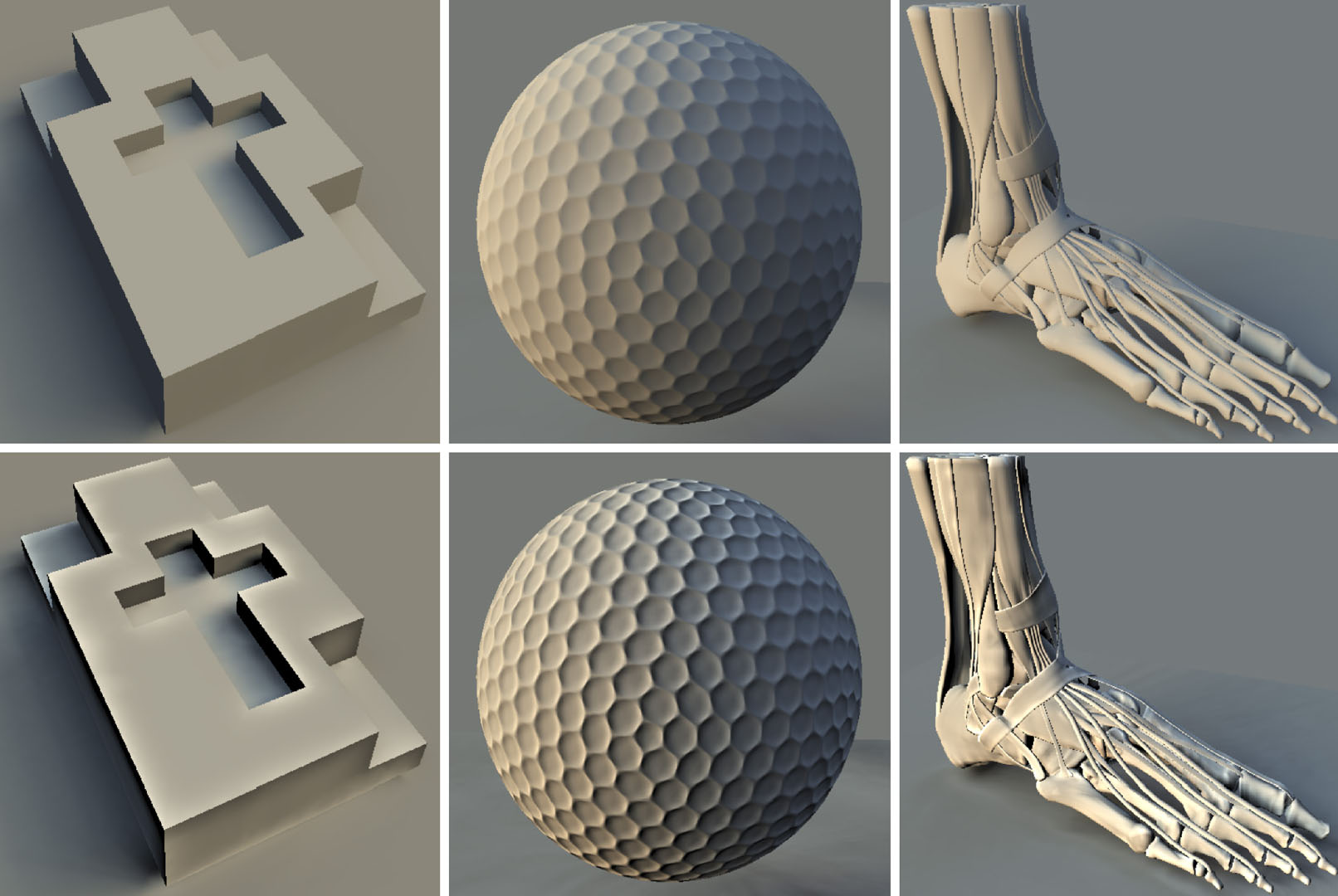“3D unsharp masking for scene coherent enhancement” by Ritschel, Smith, Ihrke, Grosch, Myszkowski, et al. …
Conference:
Type(s):
Title:
- 3D unsharp masking for scene coherent enhancement
Presenter(s)/Author(s):
Abstract:
We present a new approach for enhancing local scene contrast by unsharp masking over arbitrary surfaces under any form of illumination. Our adaptation of a well-known 2D technique to 3D interactive scenarios is designed to aid viewers in tasks like understanding complex or detailed geometric models, medical visualization and navigation in virtual environments. Our holistic approach enhances the depiction of various visual cues, including gradients from surface shading, surface reflectance, shadows, and highlights, to ease estimation of viewpoint, lighting conditions, shapes of objects and their world-space organization. Motivated by recent perceptual findings on 3D aspects of the Cornsweet illusion, we create scene coherent enhancements by treating cues in terms of their 3D context; doing so has a stronger effect than approaches that operate in a 2D image context and also achieves temporal coherence. We validate our unsharp masking in 3D with psychophysical experiments showing that the enhanced images are perceived to have better contrast and are preferred over unenhanced originals. Our operator runs at real-time rates on a GPU and the effect is easily controlled interactively within the rendering pipeline.
References:
1. Badamchizadeh, M. A., and Aghagolzadeh, A. 2004. Comparative study of unsharp masking methods for image enhancement. In International Conference on Image and Graphics (ICIG’04), 27–30. Google ScholarDigital Library
2. Bruckner, S., and Gröller, M. E. 2007. Enhancing depth-perception with flexible volumetric halos. IEEE Transactions on Visualization and Computer Graphics 13, 6, 1344–1351. Google ScholarDigital Library
3. Cavanagh, P., and Leclerc, Y. 1989. Shape from shadows. Journal of Experimental Psychology: Human Perception and Performance 15, 1, 3–27.Google ScholarCross Ref
4. Cignoni, P., Scopigno, R., and Tarini, M. 2005. A simple normal enhancement technique for interactive non-photorealistic renderings. Computer & Graphics 29, 1. Google ScholarDigital Library
5. Cornsweet, T. 1970. Visual Perception. Chapter II: The Experiment of Hecht, Schlaer, and Pirenne. Academic Press.Google Scholar
6. DeCarlo, D., Finkelstein, A., and Rusinkiewicz, S. 2004. Interactive rendering of suggestive contours with temporal coherence. In International Symposium on Non-Photorealistic Animation and Rendering (NPAR 2004), 15–145. Google ScholarDigital Library
7. DeCoro, C., Cole, F., Finkelstein, A., and Rusinkiewicz, S. 2007. Stylized shadows. In International Symposium on Non-Photorealistic Animation and Rendering (NPAR 2007), 77–83. Google ScholarDigital Library
8. Fleming, R., Torralba, A., and Adelson, E. H. 2004. Specular reflections and the perception of shape. Journal of Vision 4, 9, 798–820.Google ScholarCross Ref
9. Kingdom, F., and Moulden, B. 1988. Border effects on brightness: A review of findings, models and issues. Spatial Vision 3, 255–262.Google ScholarCross Ref
10. Krawczyk, G., Myszkowski, K., and Seidel, H.-P. 2007. Contrast restoration by adaptive countershading. In Computer Graphics Forum (Proceedings of Eurographics 2007), vol. 26.Google Scholar
11. Landis, H. 2002. RenderMan in Production. In ACM SIGGRAPH 2002 Course 16. Google ScholarDigital Library
12. Lehtinen, J., Zwicker, M., Kontkanen, J., Turquin, E., Sillion, F., and Aila, T. 2007. Meshless finite elements for hierarchical global illumination. Tech. Rep. TML-B7, Helsinki University of Technology, may.Google Scholar
13. Luft, T., Colditz, C., and Deussen, O. 2006. Image enhancement by unsharp masking the depth buffer. ACM Trans. Graph. 25, 3, 1206–1213. Google ScholarDigital Library
14. Purves, D., Shimpi, A., and Lotto, R. B. 1999. An empirical explanation of the cornsweet effect. J. of Neurosci 19, 8542–8551.Google ScholarCross Ref
15. Rusinkiewicz, S., Burns, M., and DeCarlo, D. 2006. Exaggerated shading for depicting shape and detail. ACM Trans. Graph. SIGGRAPH 25, 3, 1199–1205. Google ScholarDigital Library
16. Smith, K., Landes, P.-E., Thollot, J., and Myszkowski, K. 2008. Apparent greyscale: A simple and fast conversion to perceptually accurate images and video. Computer Graphics Forum (Proceedings of Eurographics 2008) 27, 2.Google Scholar
17. Tarini, M., Cignoni, P., and Montani, C. 2006. Ambient occlusion and edge cueing for enhancing real time molecular visualization. IEEE Transactions on Visualization and Computer Graphics 12, 5, 1237–1244. Google ScholarDigital Library
18. Taubin, G. 1995. A signal processing approach to fair surface design. In ACM Trans. Graph. SIGGRAPH, 351–358. Google ScholarDigital Library
19. Zeng, W., Daly, S., and Lei, S. 2001. An overview of the visual optimization tools in JPEG 2000. Signal Processing: Image communication Journal 17, 1, 85–104.Google Scholar




